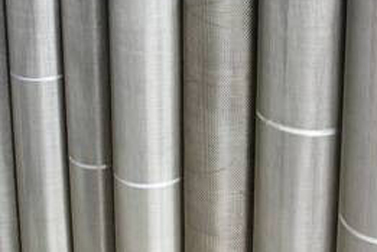When it comes to using stainless steel wire mesh cloth, one of the most important things to know is how to keep it clean. Indeed, no matter how high quality your wire mesh is, improper cleaning can ruin it in an instant. With this in mind, here is an overview of everything you need to know about wire mesh cleaning.
Stainless steel is strong, but not indestructible. One of the reasons it is so durable is that it is protected by a thin layer of chromium oxide. However, contamination can reduce the overall effectiveness of chromium oxide. In addition, certain conditions such as extreme heat, humidity, and/or exposure to corrosive chemicals can often lead to discoloration of the surface and even actual damage to the wire over time. Therefore, those who use wire mesh in these types of conditions should clean and inspect them more frequently.
There are several benefits to learning how to properly clean metal mesh and to doing so on a regular basis. They are as follows.

Stainless Steel Wire Mesh
As a means of preventing blockages/reducing line throughput
To detect damage or wear
In some cases, mild soap and water is sufficient
As a way of maintaining corrosion resistance
As a means of preventing the growth of bacteria
As a way of removing built-up dirt, grime, and surface stains
To maintain a generally pleasing aesthetic
Inspect your wire screens or sieves against a black light or white background to detect peripheral separation and damaged openings
In most cases, the best way to remove wire mesh, wire cloth, or test sieves is to clean the wire most effectively. This is why having dual filter lines is beneficial, as it allows the product flow to be redirected to the second line as the first line is cleaned. Cleaning the wire horizontally is essential and you should also ensure that you use nylon or brass wire bristles for cleaning. In general, depending on the application, stainless steel wire cloth and mesh should be cleaned using the following mesh cleaning solutions.
Stainless Steel Wire Mesh
Briefly immerse the wire mesh in a bath containing a mild detergent and warm water.
Next, you will rinse with clean water.
Always scrub it gently with a soft nylon brush, dipping it into a detergent bath will help remove more stubborn contaminants.
Always use a commercial detergent containing phosphates. Synthetic cleaners and alkalis can also be used on heavily contaminated grids, according to the information contained in the manufacturer's instructions and safety data sheets.
If the wire mesh requires a more thorough cleaning, use citric acid, nitric acid, and phosphoric acid.
After using cleaning methods and chemicals, the wire cloth should be thoroughly rinsed with water, wiped, blotted dry, or gently blown dry.
Materials: Our stainless steel wire mesh products are generally made of stainless steel Type 201,302, 304, 304L, 310,310s,316, 316L, 321 and 430, etc.
Do you have more questions about our stainless steel wire mesh or the other different metal alloy options that we offer? We’d be happy to answer all of your questions. If you want to get more information about high-quality stainless steel wire mesh wholesale, welcome to contact us today or request a quote.
Copyright © Landyoung Group Co., Ltd. All Rights Reserved. | Sitemap